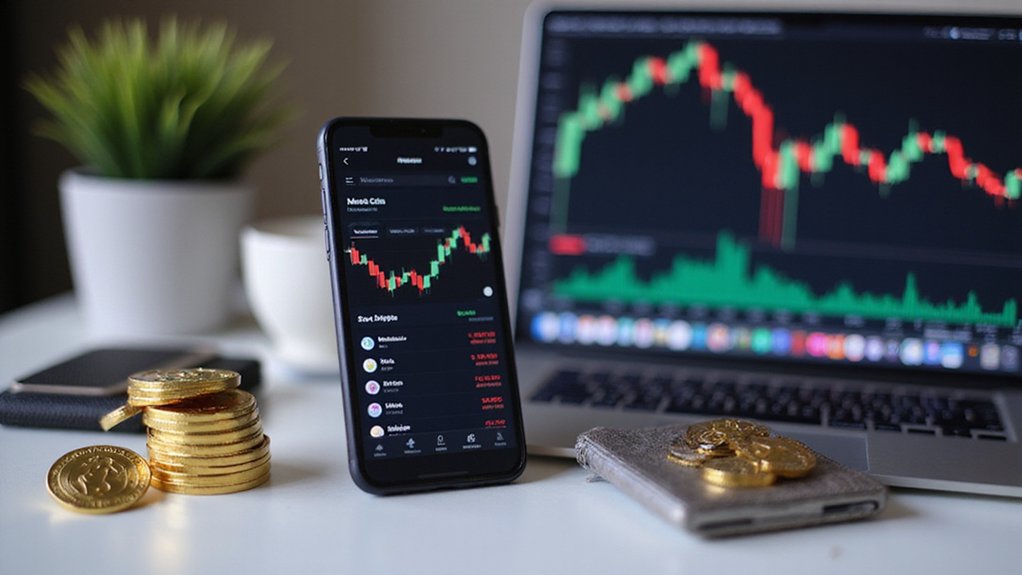Crypto airdrops represent free token distributions requiring minimal effort yet potentially yielding substantial returns. Savvy participants maximize gains by researching project legitimacy, using dedicated wallets, maintaining active blockchain profiles, and strategically timing post-airdrop decisions. The market’s peculiar generosity (blockchain ventures literally giving away assets) demands vigilance against phishing schemes masquerading as legitimate giveaways. Proper due diligence transforms these digital windfalls from mere curiosities into genuine portfolio enhancers—particularly for those willing to separate signal from crypto noise.

The cryptocurrency landscape, with its penchant for novel distribution mechanisms, has embraced the airdrop as perhaps its most seductive user acquisition strategy.
These token giveaways—fundamentally a marketing tactic wrapped in the veneer of decentralized generosity—distribute free cryptocurrencies to wallet holders who meet specific criteria, creating instant stakeholders while simultaneously generating buzz around nascent blockchain projects.
Airdrops masquerade as crypto philanthropy while strategically cultivating stakeholder communities through calculated token distribution.
Airdrops manifest in various forms, each with distinctive characteristics tailored to project objectives.
Standard airdrops cast a wide net, while targeted distributions focus on users with particular on-chain behaviors.
Bounty airdrops—requiring participants to complete predetermined tasks—transform recipients into de facto marketing agents, while holder airdrops reward existing cryptocurrency owners through wallet balance snapshots (often employed during contentious hard forks when competing visions necessitate chain divergence).
The process typically begins with a public announcement across digital channels, followed by registration periods during which users submit wallet addresses or complete required actions.
Projects then verify eligibility before execution—a seemingly straightforward sequence that nevertheless harbors potential complications ranging from technical glitches to outright duplicity.
For projects, airdrops offer compelling advantages: instant community formation, heightened market awareness, and the potential for establishing network effects without traditional marketing expenditures.
Users, meanwhile, receive assets that occasionally appreciate to significant values—a financial windfall requiring minimal investment beyond attention and basic blockchain literacy.
Yet this apparent win-win arrangement isn’t without pitfalls.
Regulatory ambiguity looms large, with some jurisdictions viewing airdrops as unregistered securities offerings.
Market volatility inevitably follows distributions as recipients liquidate holdings, creating price pressures that sophisticated traders anticipate.
More insidiously, fraudulent airdrops proliferate in the space, designed to harvest private keys or execute elaborate phishing schemes.
The discriminating cryptocurrency enthusiast must thus approach airdrops with measured optimism—verifying project legitimacy, using separate wallets for airdrop participation, and researching tokenomics before investment.
When approached with appropriate caution, airdrops represent a uniquely crypto-native opportunity to acquire assets at the asymmetric risk-reward propositions that define this still-evolving financial frontier.
Airdrop campaigns frequently utilize blockchain technology snapshots to capture precise moments identifying eligible wallet holders, ensuring fair distribution based on predefined conditions.
Participants should conduct due diligence before joining airdrops to protect themselves from potential pump-and-dump schemes where token values crash after creators sell their holdings.
Some projects implement on-chain governance mechanisms that allow airdrop recipients to participate in decision-making processes regarding protocol upgrades and development direction.
Frequently Asked Questions
Are Crypto Airdrops Taxable in Different Jurisdictions?
Crypto airdrops inhabit a peculiar tax twilight zone across jurisdictions.
The U.S. treats them as ordinary income (payable upon receipt, naturally), while the UK applies a more nuanced approach—only taxing airdrops earned through services rendered.
Canadians enjoy relative freedom, with airdrops generally considered tax-free windfalls.
Meanwhile, Australia’s taxman keenly awaits his cut upon receipt.
The global patchwork of regulations necessitates diligent compliance with local authorities—lest one’s windfall becomes a tax liability.
How Can I Avoid Airdrop Scams and Security Risks?
To avoid airdrop scams, investors should verify authenticity through official channels and reputable sources while maintaining healthy skepticism toward high-return promises.
Never sharing private keys or seed phrases remains paramount; enabling two-factor authentication and using dedicated wallets with limited funds creates essential security layers.
Those unfortunate enough to encounter scams should act swiftly—disconnecting from suspicious sites, reviewing transaction histories, and updating security protocols before the digital vultures can fully feast.
What Wallet Types Are Safest for Receiving Airdrops?
Hardware wallets represent the gold standard for airdrop security, with their offline storage capabilities creating a formidable barrier against digital threats.
Web3 wallets offering robust dApp blocklisting and multi-chain compatibility present viable alternatives, while reputable software options from established exchanges provide accessibility with reasonable protection.
The ideal choice ultimately hinges on one’s risk tolerance—those accumulating substantial airdrops would be remarkably imprudent to forgo the physical confirmation requirements and cold storage benefits of hardware solutions.
Can Participating in Airdrops Affect My Main Crypto Holdings?
Participating in airdrops typically doesn’t directly impact one’s primary cryptocurrency holdings.
However, indirect effects may emerge through market volatility when mass token distributions occur—particularly if widespread selling pressure ensues.
While separate wallets can isolate exposure, time commitments and potential security risks from less reputable airdrops might divert attention from managing core assets.
The market psychology generated by airdrops (particularly high-profile ones) occasionally ripples through the broader crypto ecosystem, affecting correlated assets.
How Long Should I Hold Airdropped Tokens Before Selling?
The ideal holding period for airdropped tokens defies one-size-fits-all prescriptions.
Data suggests 46% of valuable airdrops peak within the first two weeks amid initial hype—making this a potentially lucrative exit window.
However, tokens with robust utility and ecosystem support may warrant longer horizons.
The prudent approach involves evaluating each token’s fundamentals, market positioning, and development roadmap rather than adhering to arbitrary timelines.
In crypto’s volatile theater, timing remains less science than informed gambling.









